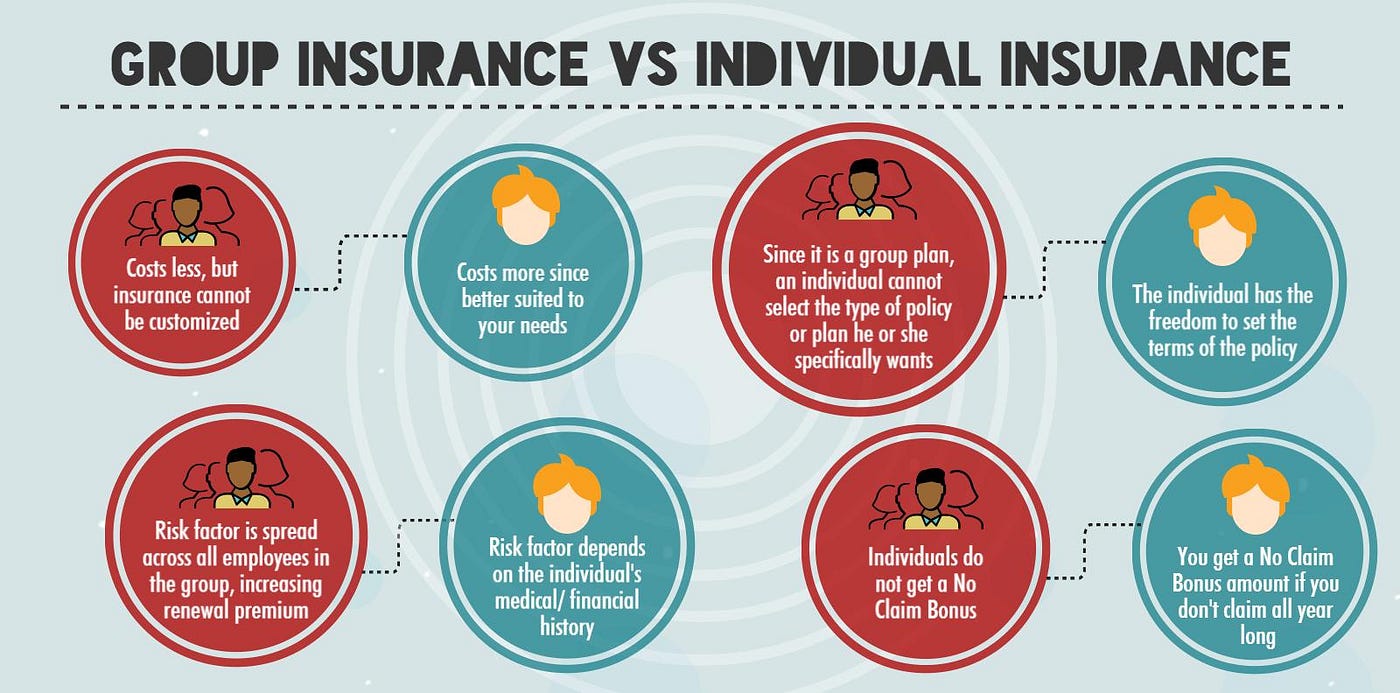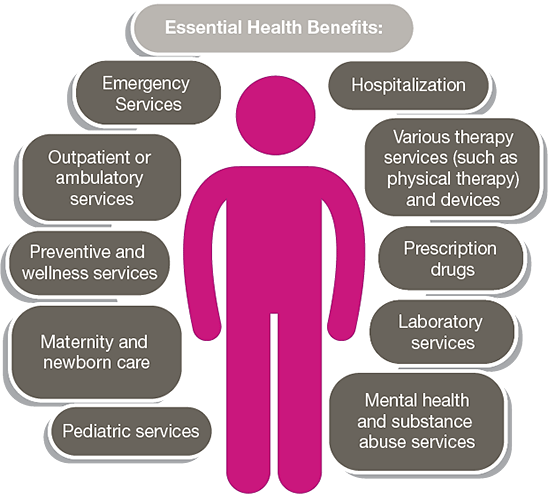Not known Factual Statements About Medicare Advantage Agent
Not known Factual Statements About Medicare Advantage Agent
Blog Article
The Ultimate Guide To Medicare Advantage Agent
Table of ContentsExamine This Report about Medicare Advantage AgentTop Guidelines Of Medicare Advantage AgentSome Known Details About Medicare Advantage Agent

complies with from perplexing the relatively young age account of the without insurance with the much better wellness, typically, of more youthful persons. This covers the web link in between health and wellness standing and wellness insurance coverage. For those without accessibility to workplace medical insurance, bad health and wellness is a potential barrier to buying nongroup coverage since such protection may be very valued, exclude preexisting problems, or be just not available. The number of without insurance Americans is not especially big and has not transformed in current years. 7 out of ten participants in a nationally representative study thought that less Americans did not have wellness insurance than in fact do(Fronstin, 1998). Approximately half(47 percent )thought that the variety of individuals without health and wellness insurance lowered or stayed continuous over the latter fifty percent of the last years(Blendon et al., 1999). This decline of practically 2 million in the variety of people 'without insurance policy (a decrease
of about 4 percent)is certainly a positive adjustment. With a softer economy in 2000 the most recent reported gains in insurance coverage might not continue(Fronstin, 2001 ). The decrease in the number of uninsured will certainly not continue if the economic climate remains slow-moving and health and wellness treatment costs remain to surpass rising cost of living. This is because the data were accumulated for a period of solid financial efficiency. Of the estimated 42 million individuals who were uninsured, all however regarding 420,000(concerning 1 percent)were under 65 years of age, the age at which most Americans end up being qualified for Medicare; 32 million were grownups in between ages 18 and 65, around 19 percent of all grownups in this age; and 10 million were children under 18 years old, concerning 13.9 percent of all youngsters (Mills, 2000). These quotes of the number of persons without insurance are produced from the yearly March Supplement to the Existing Populace Survey (CPS), carried out by the Census Bureau. Unless otherwise noted, national quotes of people without wellness insurance and percentages of the population with different sort of coverage are based upon the CPS, the most extensively utilized source of estimates of insurance protection and uninsurance rates. These surveys and the quotes they yield are described briefly in Table B. 1 in Appendix B - Medicare Advantage Agent. These surveys differ in dimension and sampling approaches, the concerns that are inquired about insurance
The 15-Second Trick For Medicare Advantage Agent
coverage, and the time period over which insurance policy coverage or uninsurance is determined(Lewis et al., 1998, Fronstin, 2000a ). Still, the CPS is particularly valuable due to the fact that it generates annual quotes relatively swiftly, reporting the previous year's insurance policy protection approximates each September, and because it is the basis for a consistent set of quotes for more than two decades, enabling evaluation of patterns in insurance coverage over time.

Medicare Advantage Agent for Beginners
Over a three-year duration beginning early in 1993, 72 million individuals, 29 percent of the U.S. population, lacked coverage for at least one month. Within a solitary year(1994), 53 million individuals experienced at the very least a month without protection(Bennefield, 1998a). Six out of every ten without insurance adults are themselves employed. Although working does boost the possibility that a person and one's family members will certainly have insurance policy, it is not an assurance. Also participants of families with 2 full-time wage income earners have nearly a one-in-ten opportunity of being uninsured (9.1 percent uninsured rate)(Hoffman and Pohl, 2000 ). The relationship in between wellness insurance coverage and accessibility to care is well developed, as recorded later in this phase. Although the connection between health insurance policy and wellness end results is neither direct neither easy, a substantial professional and health solutions research study literature links health and wellness insurance coverage
to enhanced access to care, better top quality, and boosted individual and populace health and wellness condition. The second report, on individual health end results for without insurance grownups, is stood for by the innermost circle of the figure, while the 3rd report, on household well-being, incorporates the topics of the 2nd report yet emphasizes a different unit of analysis, namely, the family. The sixth record in the series will certainly offer information about strategies and campaigns undertaken locally, statewide, or nationally this hyperlink to deal with the absence of insurance policy and its negative influences. Degrees of evaluation for taking a look at the effects of uninsurance. This conversation of health insurance policy protection concentrates largely on the united state populace under age 65 since basically all Americans 65 and older have Medicare or other public insurance coverage.
It focuses especially on those without any type of health and wellness insurance coverage for any type of length of time. The troubles dealt with by the underinsured remain in some respects similar to those encountered by the uninsured, although they are normally much less serious. Uninsurance and underinsurance, nevertheless, entail definitely various policy problems, and the approaches for addressing them might differ. Throughout this research and the 5 reports to follow, the main emphasis is on persons with no health insurance and therefore no support in paying for healthcare beyond what is offered with charity and safety and security net institutions. Medical insurance is a powerful variable influencing invoice of care because both people and medical professionals reply to the out-of-pocket rate of services. Health insurance policy, however, is neither needed nor sufficient to get to clinical solutions. Nevertheless, the independent and direct result of health and wellness
insurance protection on access to health and wellness services is well developed. Others will certainly acquire the healthcare they need also without medical insurance, by paying for it expense or seeking it from carriers who offer treatment free or at very subsidized prices. For still others, health insurance policy alone does not ensure receipt of treatment since of other nonfinancial barriers, such as a lack of healthcare companies in their community, limited access to transportation, illiteracy, or etymological and cultural differences. Formal study concerning uninsured populations in the USA dates to the late 1920s and early 1930s when the Committee on the Cost of Treatment created a collection of records regarding funding physician office brows through and hospitalizations. This problem check out this site became salient as the numbers of medically indigent climbed up during the Great Anxiety. Empirical researches regularly sustain the web link in between access to care and improved health outcomes(Bindman et al., 1995; Starfield, 1995 ). Having a regular source of treatment can be considered a predictor of access, instead than a direct step of it, when health end results are themselves utilized as gain access to signs. This expansion of the concept of gain access to measurement was made by the IOM Board on Keeping An Eye On Access to Personal Health And Wellness Care Services(Millman, 1993, p. Whether or not moms and dads are insured appears to impact whether their children receive treatment as well as just how much careeven if the kids themselves have coverage(Hanson, 1998). The health of parents can affect their capacity to take care of their youngsters and the level of household stress. Fretting about their youngsters's accessibility to care is itself a resource of stress and anxiety for moms and dads. Three phases adhere to in this record. Chapter 2 supplies a summary of exactly how employment-based medical insurance, public programs and specific insurance plan run and interact to offer substantial however incomplete insurance coverage of the U.S. populace. This consists of a testimonial of historic fads and public laws influencing both public and personal insurance policy, a conversation of the communications amongst the different kinds of insurance why not find out more coverage, and an exam of why people relocate from one program to one more or wind up

Report this page